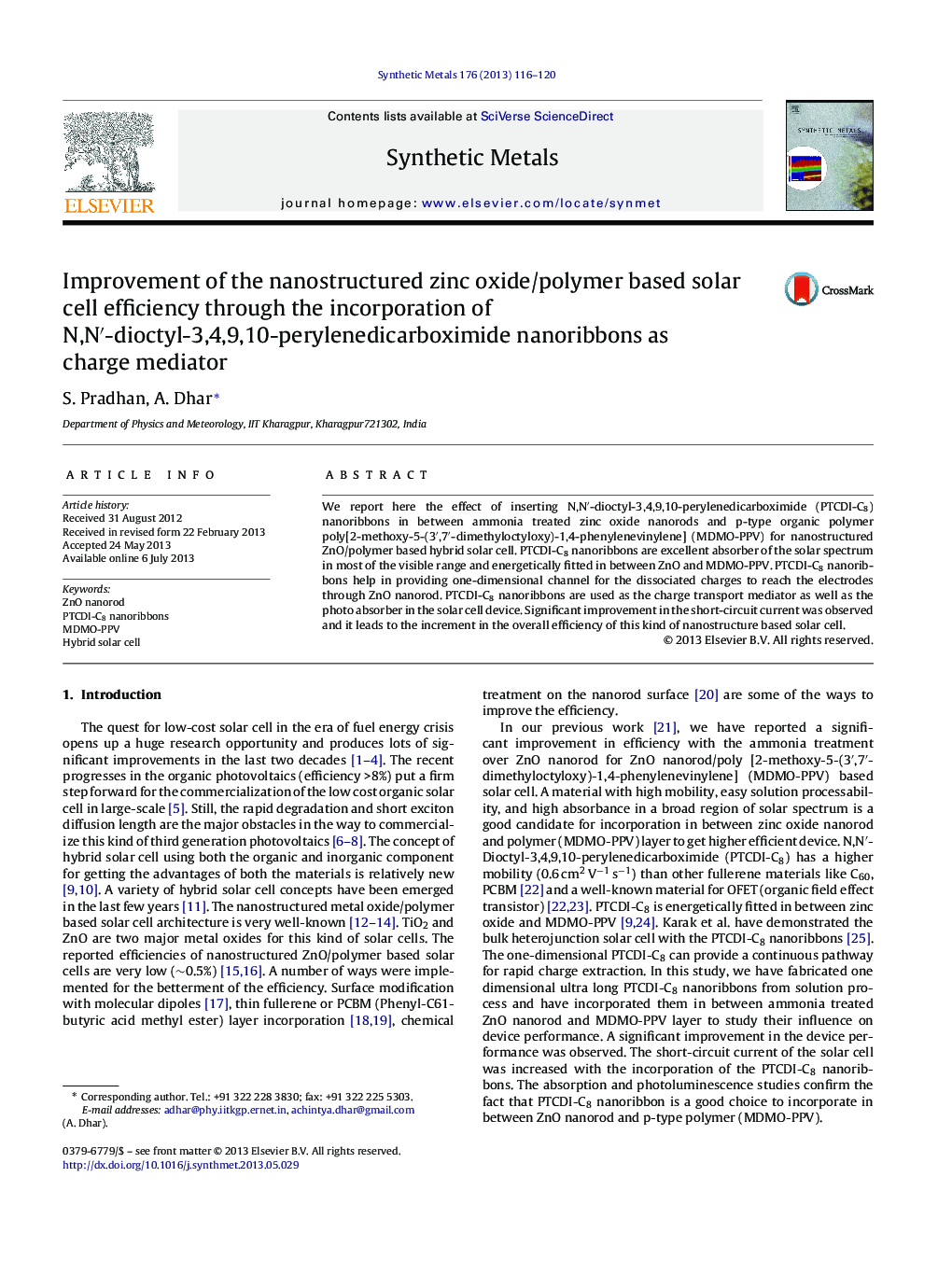| Article ID | Journal | Published Year | Pages | File Type |
|---|---|---|---|---|
| 1441273 | Synthetic Metals | 2013 | 5 Pages |
•Increment of device efficiency with the incorporation of the PTCDI-C8 nanoribbons.•PTCDI-C8 nanoribbons improve the absorption in the visible range of solar spectrum.•PTCDI-C8 nanoribbons help in the dissociation of excitons.•PTCDI-C8 helps in charge transport as it is energetically fitted in cell structure.
We report here the effect of inserting N,N′-dioctyl-3,4,9,10-perylenedicarboximide (PTCDI-C8) nanoribbons in between ammonia treated zinc oxide nanorods and p-type organic polymer poly[2-methoxy-5-(3′,7′-dimethyloctyloxy)-1,4-phenylenevinylene] (MDMO-PPV) for nanostructured ZnO/polymer based hybrid solar cell. PTCDI-C8 nanoribbons are excellent absorber of the solar spectrum in most of the visible range and energetically fitted in between ZnO and MDMO-PPV. PTCDI-C8 nanoribbons help in providing one-dimensional channel for the dissociated charges to reach the electrodes through ZnO nanorod. PTCDI-C8 nanoribbons are used as the charge transport mediator as well as the photo absorber in the solar cell device. Significant improvement in the short-circuit current was observed and it leads to the increment in the overall efficiency of this kind of nanostructure based solar cell.
